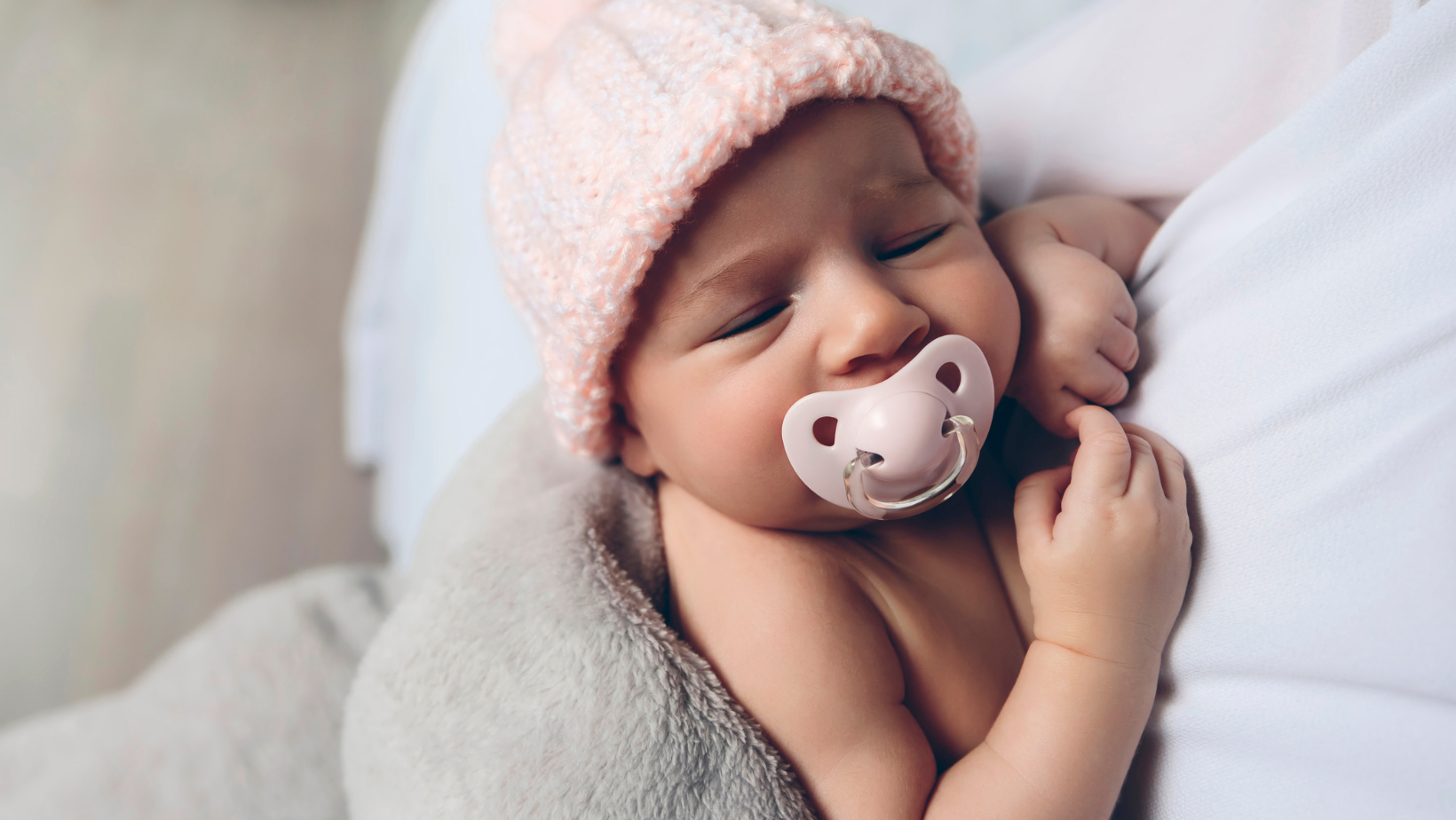Make sure you have read the first entry—Pacifiers and Bottle Nipples: Questions and Answers
Article updated on april 2021.
A very young baby can be comforted in different ways, either with a pacifier or their thumb. They may do it falling asleep, sucking their little fist without a problem. However, you must monitor them to ensure they don’t develop the habit of frequently using their thumb.
Both the Canadian, the American Dental Associations and the Canadian Pediatric Society suggest the use of a pacifier (if it seems necessary) rather than letting the baby use their thumb (or finger) to satisfy their sucking needs. Since it is always easier to break the habit of a pacifier in a child than to suck on their thumb. Sucking the thumb will have more risks for dental problems and complicate weaning. The recommendations of these two institutions also reveal the importance of never allowing them to suck sweet products or let them fall asleep with a bottle, even with milk! These issues can lead to the quick appearance of cavities (bottle cavities). Keep the pacifier and bottle nipple very clean by washing them in hot soapy water before rinsing them.
A rubber pacifier (latex) or a silicone pacifier?
The benefit of rubber (latex) is that it seems to offer more suppleness and flexibility for pacifiers and bottle nipples. This promotes the required muscle work for the baby to develop their jaws. On the other hand, the current industry trend seems to promote the use of silicone. This reassures parents regarding allergies associated with latex, even if they’re infrequent. It must also be said that Health Canada has issued strict rules regarding the use of certain components (nitrosamines), possibly carcinogenic and use to increase the flexibility of rubber pacifiers. Silicone pacifiers and bottle nipples are generally less supple than those made from latex, but are still the trend.
Silicone pacifiers and bottle nipples, because they’re less supple, not facilitate sucking and the optimal development of the child’s facial structures. The suppler a pacifier or nipple, the more functional and preferable it will be. But unfortunately, due to safety concerns, packaging of these products makes it impossible for parents to verify flexibility when choosing.
Are orthodontic pacifiers and nipples better?
Health Canada regulates different aspects concerning pacifiers and nipples to prevent dangers associated with breathing, suffocation and poisoning, but it doesn’t regulate labeling and the use of the term “orthodontic.” The term orthodontic (“ortho” meaning straight) used by the industry is very sketchy. It’s difficult for consumers to make the right choice, as the term orthodontic refers to the form rather than the effect of the product.
To read the next section, go to the entry dealing with the Choice of Pacifiers and Nipples.


